Friday, December 30, 2016
Fwd: Abundance Insider: December 30 Edition
In this week's Abundance Insider: Power-producing paint, pressure-sensing Silly Putty, and Google's fossil fuel-free future.
Cheers,
Peter, Marissa, Cody, Kelley, Greg, Sydney and AJ
P.S. Send any tips to our team by clicking here, and send your friends and family to this link to subscribe to Abundance Insider.
Control a Robotic Arm With Your Mind, No Implanted Electrodes Required
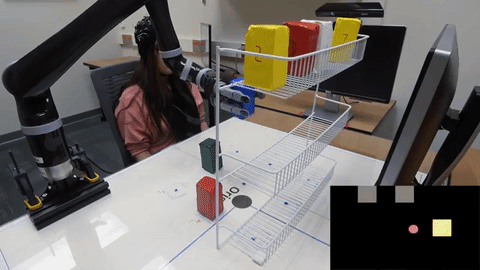
What it is: Researchers at the University of Minnesota have released a noninvasive EEG brain cap that allows people to control a robotic arm with only their thoughts. Prior successes with brain-computer interfaces (BCI) have either involved surgically implanted electrodes or have dealt with relatively less-complex movements, such as moving a mouse cursor, or a lower limb exoskeleton. Here, eight healthy human subjects wore an EEG cap with 64 electrodes to successfully grasp and move water bottles and credit cards over 80% of the time.
Why it's important: This technology empowers researchers to reach and treat a wider patient base, enabling non-therapeutic uses of BCI and fundamental breakthroughs in our understanding of general brain function. What other innovations will we see as convergences and improvements continue in machine learning, signal processing, sensors, computing power and artificial intelligence? Join the Discussion
Spotted by Greg O'Brien / Written by Jason Goodwin
Affordable Motion Capture System is an Entire Studio in One Skintight Suit
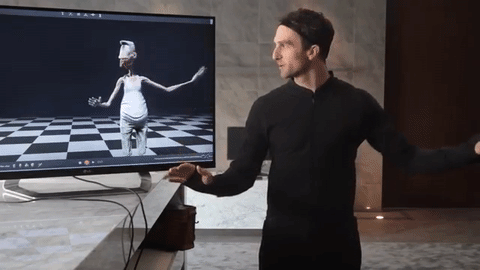
What it is: At roughly 1/50th the cost of current motion capture technologies, Danish company Rokoko just released a sensor-laden body suit that turns any space, green screen or not, into a motion capture studio. The Smartsuit Pro uses 19 sensors, each including a gyrometer, accelerometer and magnometer, coupled with on-board algorithms to make sense of the data and stream it to your device wirelessly.
Why it's important: Already packaged with integrations into gaming and VR software studios like Unity and Unreal Engine, Rokoko is poised to demonetize motion capture technology and unleash creative talent in entertainment. Look for additional use cases in neurology, physical therapy, sports performance, and real-time connection with your personal avatar in virtual worlds. Join the Discussion
Spotted by Greg O'Brien / Written by Jason Goodwin
Meet the CyBe RC 3Dp, a Concrete 3D Printer That Moves Around on Caterpillar Tracks
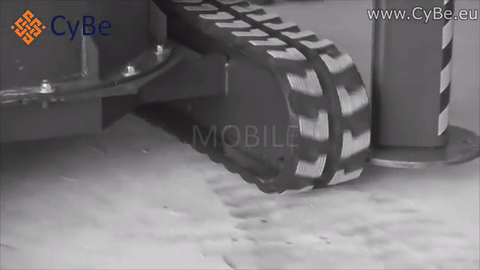
What it is: Dutch startup CyBe says it has created the world's first mobile concrete 3D printer. While many examples of 3D printed concrete structures are popping up, all have faced challenges with speed and mobility. With tank-like caterpillar wheels and an extendable undercarriage, CyBe has added mobility in three dimensions, including the vertical Z-axis.
Why it's important: Although we have seen many examples of 3D printed concrete bridges, homes and villas, all involve logistical complexity -- primarily, the need to move the printer as the piece is finished, or transporting finished jobs to the construction site. CyBe's addition here is another step towards dematerializing large-scale construction projects. Expect that this work with concrete will carry over to materials of similar strength, weight and viscosity, enabling a future where architects move from a CAD design to finished product faster, cheaper, better and easier than ever before. Join the Discussion
Spotted by Mari van Alphen / Written by Jason Goodwin
2016 Was the Year Solar Panels Finally Became Cheaper Than Fossil Fuels

What it is: The World Economic Forum recently reported that 2016 was the year solar panels officially became cheaper than fossil fuels in more than 30 countries -- meaning that it's less expensive to install new solar panels in these areas than to make a comparable investment in coal or natural gas. This past year, utilities added 9.5 gigawatts (GW) of photovoltaic capacity to the U.S. grid, which made solar the top national fuel source for the first time ever. Another fun fact from 2016, courtesy of the Solar Energy Industry Association: the U.S. added about 125 solar panels every minute -- double the pace of 2015.
Why it's important: One of the top advantages of solar energy that Peter noted in his blog on the subject was the cost efficiency of solar panels. Estimates suggest that perovskite solar panels could cost just 10 to 20 cents per watt, compared to 75 cents per watt for traditional silicon-based panels -- a cost savings ranging from 3X to 8X -- making solar panels much more affordable for the average consumer. The world has long had high hopes for solar, and it seems that potential has finally arrived. Join the Discussion
Spotted by Cody Rapp / Written by Sydney Fulkerson
World's Most Heat-Resistant Material Found
What it is: Scientists in London recently discovered the world's most heat-resistant materials -- tantalum carbide (TaC) and hafnium carbide (HfC) -- with abilities to withstand temperatures of nearly 4,000 degrees Celsius. These refractory ceramics could enable improved heat-resistant shielding for record-fast hypersonic space vehicles, and protect future spacecraft from the extreme heat generated from leaving and reentering the atmosphere.
Why it's important: As Peter mentioned in his materials science blog, we are in the midst of a materials science revolution that will impact every field of technology and every aspect of our lives -- including space exploration. The space race to claim asteroids, colonize Mars and develop reusable rockets continues; with new materials like TaC and HfC, we're better prepared than ever to withstand the heat. Join the Discussion
Spotted by Aryadeep S. Acharya / Written by Sydney Fulkerson
3D-Printed Concrete Pedestrian Bridge Built in Madrid

What it is: Last week, the world's first 3D-printed pedestrian bridge was inaugurated at the Castilla-La Mancha urban park in Alcobendas, Madrid. ACCIONA built the bridge with assistance from Enrico Dini, who invented D-Shape, a large-scale binder jetting technology that has been used to 3D print houses. Advantages to this 3D-printed concrete bridge include: (1) versatility in building structural elements without using molds or formwork, (2) flexibility and adaptability to any shape, (3) minimized waste via raw material recycling during the manufacturing process, and (4) reduced resource and energy requirements for the concrete elements. City representatives say that the opening of the bridge is a 3D printing milestone for the construction sector at an international level.
Why it's important: While this 3D printed footbridge in Madrid might not match the grandiose size or aesthetic that MX3D is aiming for in Amsterdam, the IAAC project is nonetheless a major milestone for 3D printing in the construction sector. By overcoming the limitations imposed by traditional construction techniques, the new pedestrian bridge in Madrid proves that 3D printing technology will be an advantageous tool for various construction projects in the near future. Join the Discussion
Spotted by Alexis Santin / Written by Sydney Fulkerson
What is Abundance Insider?
This email is a briefing of the week's most compelling, abundance-enabling tech developments, curated by Marissa Brassfield in preparation for Abundance 360. Read more about A360 below.
Want more conversations like this?
At Abundance 360, Peter's 250-person executive mastermind, we teach the metatrends, implications and unfair advantages for entrepreneurs enabled by breakthroughs like those featured above. We're looking for CEOs and entrepreneurs who want to change the world. The program is highly selective. If you'd like to be considered, apply here.
Know someone who would benefit from getting Abundance Insider? Send them to this link to sign up.
PHD Ventures , 800 Corporate Pointe, Suite 350, Culver City, CA 90230

Wednesday, December 28, 2016
Fwd: tools of titans
| This past week, I picked up and read Tim Ferriss' new book Tools of Titans: The Tactics, Routines, and Habits of Billionaires, Icons and World-Class Performers. The book has already shot to the top of the Best Sellers list (#4 on Amazon this morning… and climbing). I'm proud and honored that Tim featured me as one of the 100+ interviewed for his book. In this blog, I've chosen to feature the tools and tips from five amazing people highlighted in Tim's book, specifically: Tony Robbins, Peter Thiel, Marc Andreessen, Reid Hoffman and Seth Godin. Those five titans offer the following five nuggets:
All of these are ripe for your upcoming New Year's resolutions. Congrats again to Tim on his book… Let's dive in. Morning Priming (Tony Robbins)Tony Robbins introduced to me to morning priming years ago, and it has become a staple of my morning routine ever since. Upon waking, Tony immediately goes into his priming routine, which is intended to produce rapid change in his psychology and physiology. Tony says, "To me, if you want a primetime life, you've got to prime daily." Priming with Tony's method only takes around 10 minutes, and here are the three steps: 1.Expressing Gratitude (3 minutes): Tony describes this step as, "Feeling totally grateful for three things. I make sure that one of them is very, very simple: the wind on my face, the reflection of the clouds that I just saw. But don't just think gratitude. I let the gratitude fill my soul, because when you're grateful, we all know there's no anger. It's impossible to be angry and grateful simultaneously. When you're grateful, there is no fear. You can't be fearful and grateful simultaneously." 2.Spiritual Exercise (3 minutes): Tony describes this step as, "Total focus on feeling the presence of God, if you will, however you want to language that for yourself. But this inner presence coming in, and feeling it heal everything in my body, in my mind, my emotions, my relationships, my finances. I see it as solving anything that needs to be solved. I experience the strengthening of my gratitude, of my conviction, of my passion…" 3.Three to Thrive (3 minutes): Tony describes this final step as, "Focusing on three things that I'm going to make happen, my 'three to thrive.' … See it as though it's already been done, feel the emotions, etc." There is No Need to Wait (Peter Thiel)Peter Thiel's contrarian ideas have become gospel in Silicon Valley. He has been an advocate of dropping out of school in favor of entrepreneurship, and there have been tens of thousands of applications for his Thiel Fellowship since he launched it in 2011. Here is Peter Thiel's answer to the question, "What do you wish you had known about business 20 years ago?" "If you go back 20 or 25 years, I wish I would have known that there was no need to wait. I went to college. I went to law school. I worked in law and banking, though not for terribly long. But not until I started PayPal did I fully realize that you don't have to wait to start something. So if you're planning to do something with your life, if you have a 10-year plan of how to get there, you should ask: Why can't you do this in 6 months? Sometimes, you have to actually go through the complex 10-year trajectory. But it's at least worth asking whether that's the story you're telling yourself, or whether that's the reality." Strong Views, Loosely Held (Marc Andreessen)This phrase was on Marc Andreessen's Twitter bio for years. Marc's explanation of this phrase in Tim Ferriss' book is worth noting and internalizing for every entrepreneur: "Most people go through life and never develop strong views on things, or specifically go along and buy into the consensus. One of the things I think want to look for as both a founder and as an investor is things that are out of consensus, something very much opposed to the conventional wisdom… Then, if you're going to start a company around that, if you're going to invest in that, you better have strong conviction because you're making a very big bet of time or money or both. But what happens when the world changes? What happens when something else happens? That's where "loosely held" comes in. People everywhere hate changing their minds, but you need to be able to adapt in light of new information." Give the Mind an Overnight Task (Reid Hoffman)Reid Hoffman jots down problems in a notebook that he wants to his mind to work on overnight. This helps him ruminate over different ideas in his subconscious to start his next day primed with solutions. It was Thomas Edison who said, "Never go to sleep without a request to your subconscious." Here is Reid speaking on his tactic: "What are the kinds of key things that might be constraints on a solution, or might be the attributes of a solution, and what are tools or assets I might have? … I actually think most of our thinking, of course is subconscious. Part of what I'm trying to do is allow the fact that we have this kind of relaxation, rejuvenation period in sleeping, to essentially possibly bubble up the thoughts and solutions to it." To Create Something Great, Start Extremely Small (Seth Godin)Seth Godin has authored 18 best-selling books on the way ideas spread, marketing and strategic communication. His ideas on "starting small to go big" have impacted me across all my organizations and companies. In the word of United States Army general Creighton Abrams, "When eating an elephant, take one bite at a time." Here is Seth Godin on starting small: "My suggestion is, whenever possible, ask yourself: What's the smallest possible footprint I can get away with? What is the smallest possible project that is worth my time? What is the smallest group of people who I could make a difference for, or to? Because smallest is achievable. Smallest feels risky. Because if you pick smallest and you fail, now you have really screwed up… We want to pick big. Infinity is our friend. Infinity is safe. Infinity gives us a place to hide. So, I want to encourage people instead to look for the small. To be on one medium in a place where people can find you. To have one sort of interaction with one tribe, with one group where you don't have a lot of lifeboats." As always, some of the most important learnings by the most brilliant people, are all about mindset. So as you consider new mindsets for your 2017 New Year's resolutions, here's a summary of this blog: Prime every morning. Whatever you want to do with your life, do it now! Do it with strong convictions (loosely held). Set your mind to work on that goal while you sleep, and start with a small objective. Join MeThe implications and opportunities for entrepreneurs over the next 10 years are massive. This is the sort of conversation I explore at my executive mastermind group Abundance 360 (A360). Are you passionate about creating a world of Abundance? Creating Wealth and Impacting the World? I've created an online community of bold, abundance-minded innovators called Abundance 360 Digital (A360D). A360D is my 'onramp' for exponential entrepreneurs – those who want to get involved and play at a higher level. Click Here to Learn More. P.S. Every week I send out a "Tech Blog" like this one. If you want to sign up, go to Diamandis.com and sign up for this and Abundance Insider. P.P.S. My dear friend Dan Sullivan and I have a podcast called Exponential Wisdom. Our conversations focus on the exponential technologies creating abundance, the human-technology collaboration, and entrepreneurship. Head here to listen and subscribe: a360.com/podcast If you wish to stop receiving our emails or change your subscription options, please Manage Your Subscription PHD Ventures , 800 Corporate Pointe, Suite 350, Culver City, CA 90230 |
Friday, December 23, 2016
Fwd: Abundance Insider: December 23 Edition
| In this week's Abundance Insider: Power-producing paint, pressure-sensing Silly Putty, and Google's fossil fuel-free future. Cheers, P.S. Send any tips to our team by clicking here, and send your friends and family to this link to subscribe to Abundance Insider. Thermoelectric Paint Generates Electricity From Almost Any Heat Source What it is: Scientists at the Ulsan National Institute of Science and Technology claim to have created a thermoelectric coating that can be directly painted onto almost any surface. Their goal was to create thermal generators that capture and convert waste heat into electricity from objects of almost any shape, including round and irregular surfaces. This inorganic thermoelectric paint was created using Bi2Te3 (bismuth telluride) and Sb2Te3 (antimony telluride) particles, creating two types of semiconducting material. The researchers tested the mixture by applying alternate p-type (positive) and n-type (negative) layers of the paint on a metal dome, which generated an average power output of 4 mW per square centimeter. As a result, the UNIST prototype can be applied to almost any surface with just a paintbrush, placing itself as a new type of new and renewable energy-generating system in the near future. Why it's important: Imagine generating solar power by simply painting the external surfaces of materials and devices (i.e. exterior walls, outdoor decorations and cars). In 88 minutes, 470 exajoules of energy from the sun hits the Earth's surface, which is as much energy as humanity consumes in a year. This process could greatly demonetize and dematerialize how we capture and use solar energy. Join the Discussion Spotted by Aryadeep S. Acharya / Written by Sydney Fulkerson Adding a Funny Form of Carbon to Silly Putty Creates a Heart Monitor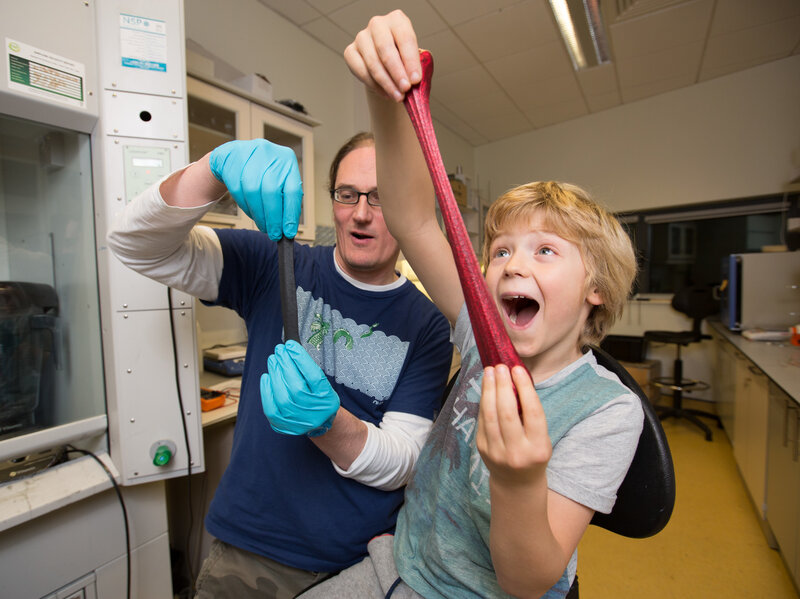 What it is: Physicist Jonathan Coleman and his team at Trinity College in Dublin are combining Silly Putty with a special form of carbon to create a new material believed to someday be useful in making medical devices. The combination of graphene and Silly Putty results in a material that is still runny and bouncy, but now conducts electricity and is extremely sensitive to pressure -- even the tiniest amount of pressure changes its electrical resistance. In the future, Coleman believes, this material could be used pressed against a person's carotid artery to measure their pulse and blood pressure. Why it's important: In Peter's blog on Materials Science and Technology Convergence, he mentions how the potential impact of graphene will be a key factor in a world of ubiquitous sensing and ubiquitous computing. Over the last decade, we've been able to use graphene to make new kinds of electronics, very high-performance transistors, new kinds of sensors, and new kinds of composites based on its unique properties. We are in the midst of a materials science revolution that will impact every field of technology, and every aspect of our lives -- including our health. Join the Discussion Spotted by Aman Merchant / Written by Sydney Fulkerson Bill Gates, Jeff Bezos and 18 Others Commit $1 Billion to New Cleantech Fund, Breakthrough Energy Ventures What it is: Breakthrough Energy Ventures (BEV), a newly created fund founded by Bill Gates, Jeff Bezos, Vinod Khosla, Jack Ma, John Doerr and 15 other high-profile investors, will pour at least $1 billion into clean tech companies at all stages over the next 20 years. In true moonshot style, their goal is "to provide everyone in the world with access to reliable, affordable power, food, goods, transportation, and services without contributing to greenhouse gas emissions." Why it's important: The 2008 recession and a few failed high-profile startups knocked cleantech out of favor with private and public investors alike. In the vein of Sean Parker's mission to end cancer and Zuckerberg's $3 billion pledge to end disease, the BEV should galvanize other investors and governments to take action -- and, perhaps most importantly, add legitimacy to the long-term thinking and patience often required to be successful in energy and infrastructure. Look for greater R&D funding and adoption worldwide. Join the Discussion Spotted by Khaled Salih / Written by Jason Goodwin It's Like Uber for Tractors, and It Could Change the Game for African Farmers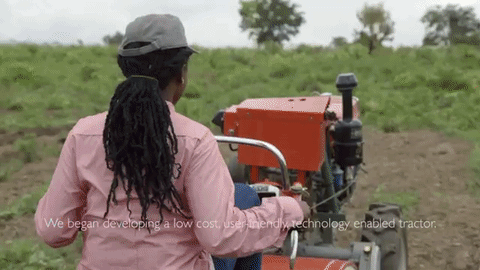 What it is: Hello Tractor connects Nigerian tractor owners with farmers via SMS, creating a service where, as Take Part describes, the tractor owner "drives the tractor to the farm, provides the labor, and is paid $75 per hectare." At a third of the cost of manual cultivation, the farmer benefits and the tractor owner increases her wages by 500%, from the $5 that would be possible via manual labor to $25 after "fuel, maintenance, and repair costs, as well as loan repayment" on the tractor. Why it's important: The technology we now take for granted in developed countries, such as mobile phones, GPS, SMS, and robust connectivity, can create vast improvements in developing nations. In Nigeria, not only does land go underused because high-season labor can be too expensive, but women are often disproportionately affected, as they have less access to land, equipment, credit and services. Here, Hello Tractor leverages the dematerialized and democratized technologies embedded in a smartphone to reshape Nigerian farming and enable abundance -- growing more food and challenging cultural norms simultaneously. Join the Discussion Spotted by Aryadeep S. Acharya / Written by Jason Goodwin Adidas Puts a Limited Number of its 3D Printed Running Shoes Up for Sale What it is: Available in limited quantities, Adidas put its new 3D printed running shoe on sale in London, New York and Tokyo. While not bespoke, the 3D Runner features unique technical features like a heel counter integrated into the midsole, and variable density areas, which are hard to replicate via traditional methods like gluing and stitching. Why it's important: This advance illustrates that 3D printing is as much about creating novel structures and designs as it is about reducing waste and the time to prototype and iterate. Additionally, this enables Adidas to make personalized running shoes based on individual performance data. Look for competitors to continue upping the ante on all fronts, from reducing waste to on-demand printing, improved performance characteristics and lowered costs. Join the Discussion Spotted by Cody Rapp / Written by Jason Goodwin Google to Run On 100% Renewable Energy in 2017 What it is: Urs Hölzle, Google's Senior Vice President for Technical Infrastructure, announced that its entire global business will be powered by renewable energy in 2017, making good on a pledge made back in 2012. Although Google is not the only global corporation striving towards a fossil fuel-free future, it is by far the world's largest corporate buyer of renewable power -- 2,600 megawatts of wind and solar energy, mostly from wind farms. Although the U.S. administration has pledged to water down climate-change agreements, Urs Hölzle made it clear that Google will not divert from its commitment to renewable energy. Why it's important: Google's sustainability initiative will put more pressure on large corporations to move away from fossil fuels. As Peter mentioned in his blog on Disrupting Energy, this is an incredibly exciting time for the energy industry, and an incredibly exciting time to be alive. As the economic feasibility of renewable energy improves, and especially solar power, we'll rapidly enable abundant, cheap energy for everyone on the planet. Join the Discussion Spotted by Aryadeep S. Acharya / Written by Sydney Fulkerson What is Abundance Insider?This email is a briefing of the week's most compelling, abundance-enabling tech developments, curated by Marissa Brassfield in preparation for Abundance 360. Read more about A360 below. Want more conversations like this?At Abundance 360, Peter's 250-person executive mastermind, we teach the metatrends, implications and unfair advantages for entrepreneurs enabled by breakthroughs like those featured above. We're looking for CEOs and entrepreneurs who want to change the world. The program is highly selective. If you'd like to be considered, apply here. Know someone who would benefit from getting Abundance Insider? Send them to this link to sign up. If you wish to stop receiving our emails or change your subscription options, please Manage Your Subscription PHD Ventures , 800 Corporate Pointe, Suite 350, Culver City, CA 90230 |
Sunday, December 18, 2016
Fwd: transformation of humanity
As we close out 2016, if you'll allow me, I'd like to take a risk and venture into a topic I'm personally compelled to think about… a topic that will seem far out to most readers.
Today's extraordinary rate of exponential growth may do much more than just disrupt industries. It may actually give birth to a new species – reinventing humanity – over the next 30 years.
I believe we're rapidly heading towards a human-scale transformation, the next evolutionary step into what I call a "Meta-Intelligence," a future in which we are all highly connected -- brain to brain via the cloud -- sharing thoughts, knowledge and actions.
In this blog, I'm investigating the driving forces behind such an evolutionary step, the historical pattern we are about to repeat, and the implications thereof.
Again, I acknowledge that this topic seems far-out, but the forces at play are huge and the implications are vast.
Let's dive in…
A Quick Recap: Evolution of Life on Earth in 4 Steps
About 4.6 billion years ago, our solar system, the Sun and the Earth were formed.
Step 1: 3.5 billion years ago, the first simple life forms, called "prokaryotes," came into existence.
These prokaryotes were super-simple, microscopic single-celled organisms, basically a bag of cytoplasm with free-floating DNA. They had neither a distinct nucleus nor specialized organelles.
Step 2: Fast-forwarding one billion years… 2.5 billion years ago, the next step in evolution created what we call "eukaryotes" – life forms that distinguished themselves by incorporating biological 'technology' into themselves. Technology that allowed them to manipulate energy (via mitochondria) and information (via chromosomes) far more efficiently.
Fast forward another billion years for the next step…
Step 3: 1.5 billion years ago, these early eukaryotes began working collaboratively and formed the first "multi-cellular life," of which you and I are the ultimate example (a human is a multicellular creature of 10 trillion cells).
Step 4: The final step I want to highlight happened some 400 million years ago, when lungfish crawled out of the oceans onto the shores, and life evolved from the oceans onto land.
The Next Stages of Human Evolution: 4 Steps
Today, at a massively accelerated rate – some 100 million times faster than the steps I outlined above – life is undergoing a similar evolution.
In this next stage of evolution, we are going from evolution by natural selection (Darwinism) to evolution by intelligent direction.
Allow me to draw the analogy for you:
Step 1: Simple humans today are analogous to prokaryotes… Simple life, each life form independent of the others, competing and sometimes collaborating.
Step 2: Just as eukaryotes were created by ingesting technology, humans will incorporate technology into our bodies and brains that will allow us to make vastly more efficient use of information (BCI) and energy.
Step 3: Enabled with BCI and AI, humans will become massively connected with each other and billions of AI's (computers) via the cloud, analogous to the first multicellular lifeforms 1.5 billion years ago. Such a massive interconnection will lead to the emergence of a new global consciousness, and a new organism I call the Meta-Intelligence.
Step 4: Finally, humanity is about to crawl out of the gravity well of Earth to become a multiplanetary species. Our journey to the Moon, Mars, asteroids and beyond represents the modern-day analogy of journey made by lungfish climbing out of the oceans some 400 million years ago.
The Four Forces Driving the Evolution and Transformation of Humanity
Four primary driving forces are leading us towards our transformation of humanity into a meta-intelligence both on and off the Earth:
We're wiring our planet
Emergence of brain-computer interface
Emergence of AI
Opening of the Space Frontier
Let's take a look:
1. Wiring the Planet: Today, there are 2.9 billion people connected online. Within the next six to eight years, that number is expected to increase to nearly 8 billion, with each individual on the planet having access to a megabit-per-second connection or better.
The wiring is taking place through the deployment of 5G on the ground, plus networks being deployed by Facebook, Google, Qualcomm, Samsung, Virgin, SpaceX and many others.
Within a decade, every single human on the planet will have access to multimegabit connectivity, the world's information, and massive computational power on the cloud.
2. Brain-Computer Interface: A multitude of labs and entrepreneurs are working to create lasting, high-bandwidth connections between the digital world and the human neocortex (I wrote about that in detail here).
Ray Kurzweil predicts we'll see human-cloud connection by mid 2030s, just 18 years from now.
In addition, entrepreneurs like Bryan Johnson (and his company Kernel) are committing hundreds of millions of dollars towards this vision.
The end results of connecting your neocortex with the cloud are twofold: First, you'll have the ability to increase your memory capacity and/or cognitive function millions of fold; second, via a global mesh network, you'll have the ability to connect your brain to anyone else's brain, and to emerging AI's, just like our cell phones, servers, watches, cars and all devices are becoming connected via the Internet of Things.
3. Artificial Intelligence/Human Intelligence: Next, and perhaps most significantly, we are on the cusp of an AI revolution.
Artificial intelligence, powered by deep learning and funded by companies such as Google, Facebook, IBM, Samsung and Alibaba, will continue to rapidly accelerate and drive breakthroughs.
Cumulative "intelligence" (both artificial and human) is the single greatest predictor of success for both a company or a nation.
For this reason, beside the emerging AI "arms race," we will soon see a race focused on increasing overall human intelligence.
Whatever challenges we might have in creating a vibrant brain-computer interface (e.g. designing long-term biocompatible sensors or nanobots that interface with your neocortex), those challenges will fall quickly over the next couple of decades as AI power tools give us every increasing problem-solving capability.
It is an exponential atop an exponential.
More intelligence gives us the tools to solve connectivity and mesh problems and in turn create greater intelligence.
4. Opening the Space Frontier: Finally, it's important to note that the human race is on the verge of becoming a multiplanetary species.
Thousands of years from now, whatever we've evolved into, we will look back at these next few decades as the moment in time that the human race moved off Earth irreversibly.
Today, billions of dollars are being invested privately into the commercial space industry. Efforts led by SpaceX are targeting humans on Mars, while efforts by Blue Origin are looking at taking humanity back to the Moon and plans by my own company, Planetary Resources, strive to unlock near-infinite resources from the asteroids.
In Conclusion
The rate of human evolution is accelerating as we transition from the slow and random process of "Darwinian natural selection" to a hyper-accelerated and precisely directed period of "evolution by intelligent direction."
In this blog, I chose not to discuss the power being unleashed by such gene-editing techniques as CRISPR-Cas9. Consider this yet another tool able to accelerate evolution by our own hand.
The bottom line is that change is coming, faster than ever considered possible.
All of us leaders, entrepreneurs and parents have a huge responsibility to inspire and guide the transformation of humanity on and off the Earth.
What we do over the next 30 years – the bridges we build to abundance – will impact the future of the human race for millennia to come.
We truly live during the most exciting time ever in human history.
Join Me
The implications and opportunities this next decade for entrepreneurs are massive.
This is the sort of conversation we explore at my executive mastermind group Abundance 360 (A360).
Interested in A360? The program is highly selective. If you'd like to be considered, apply HERE. Share this with your friends, especially if they are interested in any of the areas outlined above.
We also explore this in my exclusive online community of bold, abundance-minded innovators called Abundance 360 Digital (A360D).
A360D is my 'onramp' for exponential entrepreneurs – those who want to get involved and play at a higher level. Click Here to Learn More
P.S. Every week I send out a "Tech Blog" like this one. If you want to sign up, go to Diamandis.com and sign up for this and Abundance Insider.
P.P.S. My dear friend Dan Sullivan and I have a podcast called Exponential Wisdom. Our conversations focus on the exponential technologies creating abundance, the human-technology collaboration, and entrepreneurship. Head here to listen and subscribe: a360.com/podcast
If you wish to stop receiving our emails or change your subscription options, please Manage Your Subscription
PHD Ventures , 800 Corporate Pointe, Suite 350, Culver City, CA 90230
<https://blogger.googleusercontent.com/img/proxy/AVvXsEiZOt5u9PJk0Oeo8aRiPKQ27fWMWYFlXeGi7ADmpGdFmDX5U3-rCtR6xFZh0aMtGXL7yz5TLRs6eGJ3mB9__r4Ica6MovTLUxuT3UCDA3Y1BPZ6NC40EqluT_f8PLDHRzQ4hJP32GXjVci1943minNV4B4rZDPcgsdyNwzqkA=s0-d-e1-ft>
Sunday, December 11, 2016
Fwd: free money, no strings attached
| Some fear that robots and AI will steal our jobs. They probably will (in the near-term, at least half of them). If that happens, what will we do for a living? How will we earn money? In this blog I'll be discussing one of the most important proposed solutions to job loss due to automation -- the notion of "Universal Basic Income" (sometimes called guaranteed minimum income). In specific, I want to discuss:
Let's dive in. Predictions on Job LossIn 2013, Dr Carl Benedikt Frey of the Oxford Martin School estimated that 47 percent of jobs in the US are "at risk" of being automated in the next 20 years. The figure was recently verified recently by McKinsey & Company who suggests that 45 percent of jobs today will be automated by using exponential technologies such as machine learning, artificial intelligence, robotics and 3D printing. The concept is called technological unemployment, and most careers, from factory workers and farmers to doctors and lawyers, are likely to be impacted. The impact will likely be even more severe in the developing world. The expected implications of technological unemployment vary widely. Individuals like Ray Kurzweil and venture capitalist Marc Andreessen believe that while today's jobs will perish, new jobs will be created by technology to replace them. Other experts project that technological unemployment will be massively disruptive to society. Still others believe that society will adapt, first by constantly demonetizing our cost of living and next by the the widespread deployment of "universal basic income." (NOTE: In case you missed it, in a previous blog I covered, in detail, how we are in the process of massively demonetizing the cost of living.) What is Universal Basic Income? Who is Experimenting?Universal basic income (UBI) is a policy in which all citizens of a country regularly receive an unconditional sum of money, either from a government or some other public institution, in addition to any income received from other means. UBI's core motivation — to address social ills by giving people "free" money — is certainly not a new idea. For some perspective, Thomas Paine outlined a plan in his 1797 essay "Agrarian Justice" to create a national fund making payments of 15 pounds sterling to each adult over 21 years old…. Today, experiments with UBI are spreading across the world, from Finland and the Netherlands to Canada and France. In France, several members of Parliament have supported running an experiment, and the finance minister is open to it. In the last decade, over eight countries have formally experimented with UBI. Here are the top three active experiments worth noting:
In January, Sam Altman, the president of Y Combinator, announced that the San Francisco-based startup fund was organizing a basic income study in the U.S. Does UBI work?While the implementation of UBI at scale is still in its early days, the results are promising. Early results in the India experiment show nutrition was improved as measured by the average weight-for-age of young children (World Health Organization z-score), and more so among girls. In the same study, the UBI grants led to more labor and work, not less, as expected by skeptics. There was a shift from casual wage labor to more self-employed farming and business activity, with less distress-driven migration out of the region. Women gained more than men. That being said, the most compelling study demonstrating how universal basic income could work comes from a small town in Canada. From 1974 to 1979, the Canadian government partnered with the province of Manitoba to run an experiment on the idea of providing a minimum income to residents called MINCOME. MINCOME was a guaranteed annual income offered to every eligible family in Dauphin, a prairie town of about 10,000, and smaller numbers of residents in Winnipeg and some rural communities throughout the province. So what happened to families receiving MINCOME?
The program brought most recipients above Canada's poverty line. And the employment effects in Dauphin were modest. For primary earners — those with full-time jobs — there was virtually no decline in work. Essentially, nobody was quitting their jobs. Cash from the government eased families' economic anxiety, allowing them to invest in their health and plan over a longer horizon. MINCOME is now serving as inspiration for basic income's comeback in Canada. In its 2016 budget, the provincial government of Ontario announced plans to conduct a basic income pilot this year. ImplicationsI'm fairly confident that in the near future, as technology continues to eliminate traditional jobs and massive new wealth gets created, we're going to see some version of universal basic income deployed at scale. While I think the implications of UBI are mostly positive, there are certainly many complexities associated with its rollout. There are still many questions that remain unanswered – where is the additional money coming from? Taxes? Will UBI cause problems that we can't anticipate or create more conflict than it resolves? Can governments react quickly enough, given the pace of innovation and automation in tech? Is it actually a solution to technological unemployment? Or will we still have to go through a turbulent, violent period as we redistribute our labor in a world of robots and AI? At minimum, I believe that with decreased costs of living, UBI will be one of many tools empowering self-actualization at scale – more people will be able to follow their passions, be more creative, and spend more time on higher-order, personally fulfilling tasks. When this happens, we'll be one step closer to a world of abundance. Join MeThe implications and opportunities this next decade for entrepreneurs are massive. This is the sort of conversation we explore at my exclusive online community of bold, abundance-minded innovators called Abundance 360 Digital (A360D). A360D is my 'onramp' for exponential entrepreneurs – those who want to get involved and play at a higher level. P.S. Every week I send out a "Tech Blog" like this one. If you want to sign up, go to Diamandis.com and sign up for this and Abundance Insider. P.P.S. My dear friend Dan Sullivan and I have a podcast called Exponential Wisdom. Our conversations focus on the exponential technologies creating abundance, the human-technology collaboration, and entrepreneurship. Head here to listen and subscribe: a360.com/podcast If you wish to stop receiving our emails or change your subscription options, please Manage Your Subscription PHD Ventures , 800 Corporate Pointe, Suite 350, Culver City, CA 90230 |
Friday, December 9, 2016
Fwd: Abundance Insider: December 9 Edition
| In this week's Abundance Insider: Checkout-free grocery stores, detect-and-avoid drones, and a biofabrication institute that's creating the hospital of the future. Cheers, P.S. Send any tips to our team by clicking here, and send your friends and family to this link to subscribe to Abundance Insider. Only Amazon Could Make a Checkout-Free Grocery Store a Reality What it is: Amazon formally announced Amazon Go, a grocery store without cashiers, lines, cash or credit cards. The shopping process is simple: select your items, and then walk straight out the door. While Amazon hasn't released the precise sensor, deep learning and computer vision technologies underpinning this futuristic store, it has opened a pilot in Seattle open to employees. The plan is to open to the public and then expand to nearly 1,800 stores across the U.S. Why it's important: This is the future of retail, brought to you by an e-commerce company disrupting the traditional grocery store. When multiple exponential technologies -- in this case, AI, computing power, and sensor networks -- become viable at the same time, massive opportunities result. Join the Discussion Spotted by Dan Swift / Written by Jason Goodwin Arago's AI Can Now Beat Some Human Players at Complex Civ Strategy Games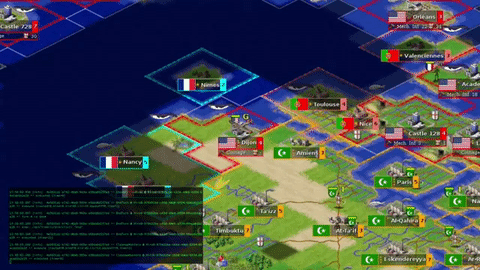 What it is: HIRO AI -- Arago's flagship product designed to learn from and amplify human knowledge -- can now beat around 80 percent of the humans playing the building simulation game Freeciv. For an AI to succeed in this game, it requires a very plastic AI to accurately learn how to negotiate twists and turns. The purpose of HIRO playing video games is to offer the AI service to businesses that seek to improve their IT automation, but Arago's long-term goal is to create a more general AI tool capable of learning and performing a broader range of tasks. Why it's important: As AIs continue to make progress in the accuracy and automation of their skillset, businesses will be able to confidently adopt these technologies within their own infrastructure. Human IT experts will be made better over time through the use of these AIs, which will greatly demonetize the cost of IT departments -- all while saving time and improving task performance accuracy. Join the Discussion Spotted by Cody Rapp / Written by Sydney Fulkerson Echodyne Announces the First Successful Airborne Detect and Avoid Radar Test on a Small Drone What it is: Echodyne Corp announced its recent success in the world's first airborne Detect and Avoid radar test on a small unmanned aerial vehicle. The radar was secured on a small drone -- the kind of drone designed for tasks like package delivery and agricultural monitoring. The radar tests were conducted with Echodyne's developer kit radar with its Metamaterial Electronically Scanning Array (MESA), enabling electronic scanning delivered in a smaller, lighter and less costly form than before. These tests successfully scanned up to 120° x 80°, which resulted in the radar tracking a small UAV, a Beechcraft Bonanza and an ultralight aircraft -- in addition to vegetation, barbed wire fences and other obstacles that the radar provided in a 4D data cube. This test's results brings Echodyne one step closer to fulfilling the company's mission to make the world a safer place using cars, drones and other vehicles to accurately sense the world around them. Why it's important: One of the top 5 recent drone breakthroughs Peter mentioned in his blog on the convergence of drones was the transition from the consumer phase of drones -- more or less a toy -- to the commercial phase -- mainstream business. Also referred to as sensor platforms, these drones are now being used across industries to provide accurate data in a cost-effective manner. In the near future, commercial use of drones as tools will grow tremendously. Join the Discussion Spotted by Rick Beasley / Written by Sydney Fulkerson Climate Vulnerable Nations Aim for 100 Percent Renewable Energy at Talks in Marrakech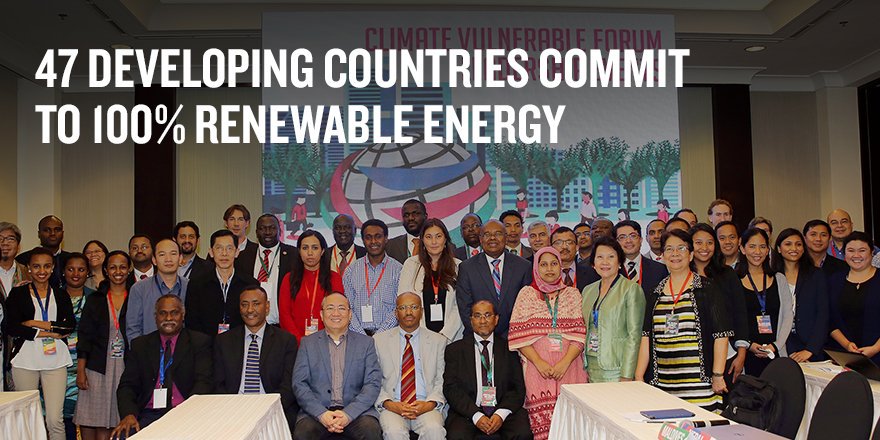 What it is: In Marrakech, more than 45 countries -- including those most vulnerable to climate change like the Philippines or the Marshall Islands -- pledged to switch to 100% renewable energy by 2030 to 2050 at the latest. Why it's important: Despite a tenuous political climate in U.S. on the Paris Agreement, this agreement signals that solar, wind, and other renewable technologies will continue to improve and be adopted globally. A largely renewable (i.e. solar) future is inevitable. Join the Discussion Spotted by Peter Diamandis / Written by Jason Goodwin Herston Biofabrication Institute: Creating the Hospital of the Future What it is: In an effort to advance 3D printing as applied to biological systems, Queensland announced the creation of the Herston Biofabrication Institute, set to open in 2017. The Institute will bring together an interdisciplinary team spanning clinicians, scientists, mathematicians, and engineers to create next-generation biofab techniques in data acquisition and 3D clinical imaging, computational medicine, 3D modeling and visualization, 3D cell culture and advanced manufacturing. Why it's important: This is the future of healthcare, highly personalized and automated. It is also a huge step towards advancing 3D printing and imaging in medicine, and as a model for conducting medical research. Herston's interdisciplinary approach should cut down time to market for new inventions. Look for advances in areas as disparate as robotic surgery, bone reconstruction, and significant crossover insights generated from better 3D imaging techniques. Join the Discussion Spotted by Peter Diamandis / Written by Jason Goodwin Nikola to Unveil Electric Class 8, Strategic Partnership with Ryder What it is: Nikola Motor Company recently unveiled its zero-emissions, hybrid-electric Class 8 tractor -- officially the most advanced semi-truck ever built. The unveiling took place at the company's Salt Lake City headquarters and via a livestream on the Nikola website. The company also announced its new partnership with Ryder System as the exclusive distribution and maintenance provider for all Nikola trucks moving forward. In addition to Ryder as a partner, founder and CEO Trevor Milton said Nikola has already started discussing plans to seek out a partner focused on technology to reduce fossil fuel consumption in the U.S. trucking industry. Milton also shared the company's plan to launch hydrogen fueling stations across the U.S. and Canada beginning in January 2018. Why it's important: Expect to see rapid innovation in the trucking industry as manufacturers incorporate clean energy lessons learned from consumer car designs into commercial fleets. How will Nikola's approach perform in a competitor landscape that includes Otto's self-driving semi-trucks? Join the Discussion Spotted by Paul Heiss / Written by Sydney Fulkerson Japan Looks to Create a Superfast Supercomputer for Deep Learning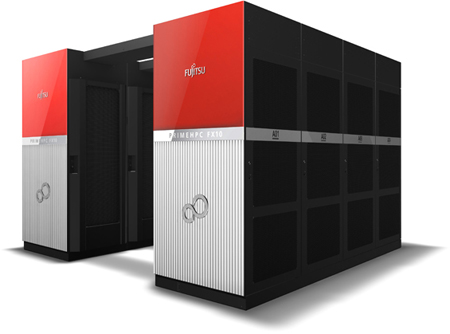 What it is: Japan's Ministry of Economy, Trade and Industry plans to invest 19.5 billion yen -- about $173 million USD -- to develop the world's fastest supercomputer as early as next year. Its engineers plan to build a machine capable of 130 petaflops, or 130 quadrillion calculations per second, according to Reuters. Japan hopes to use this computer to accelerate artificial intelligence and deep learning, while also serving the data mining needs for Japanese corporations (currently, most outsource this task to organizations like Microsoft or Google). Why it's important: China recently surpassed Japan as the second largest economy in the world, and this breakthrough would help Japan regain its technological edge -- and kickstart a wave of innovation in robotics, artificial intelligence, and every other area of industry. Join the Discussion Spotted by Peter Diamandis / Written by Marissa Brassfield Google DeepMind Makes AI Training Platform Publicly Available What it is: Alphabet Inc.'s AI division Google DeepMind recently opened up their training environment's entire source code on GitHub. The publicly available AI test bed, DeepMind Lab (previously known as Labyrinth), allows anyone to download and customize the Lab's code to help train their own AI systems. In addition to downloading the code, the public now also has the opportunity to create new game levels and upload them to GitHub. Google DeepMind hopes that opening up its Lab code to the public will allow researchers to analyze their developer's breakthroughs, and see how their own AIs measure up to DeepMind's performance. Why it's important: Peter's blog on AI and technology convergence quotes Stephen Gold, CMO and CP of Business Development and Partner Programs at IBM Watson, on the implications of AI's advancements in deep learning. "Machine learning is about man assisting computers," he said. "Deep learning is about systems beginning to progress and learn on their own." As AI and cognitive computing develop, we're continually enabling computers to do more unaided learning. DeepMind's open-sourced Lab code accelerates this even further. Join the Discussion Spotted by Dan Swift / Written by Sydney Fulkerson What is Abundance Insider?This email is a briefing of the week's most compelling, abundance-enabling tech developments, curated by Marissa Brassfield in preparation for Abundance 360. Read more about A360 below. Want more conversations like this?At Abundance 360, Peter's 250-person executive mastermind, we teach the metatrends, implications and unfair advantages for entrepreneurs enabled by breakthroughs like those featured above. We're looking for CEOs and entrepreneurs who want to change the world. The program is highly selective. If you'd like to be considered, apply here. Know someone who would benefit from getting Abundance Insider? Send them to this link to sign up. If you wish to stop receiving our emails or change your subscription options, please Manage Your Subscription PHD Ventures , 800 Corporate Pointe, Suite 350, Culver City, CA 90230 |
Wednesday, December 7, 2016
Fwd: Board of Directors Newsletter #103
|
